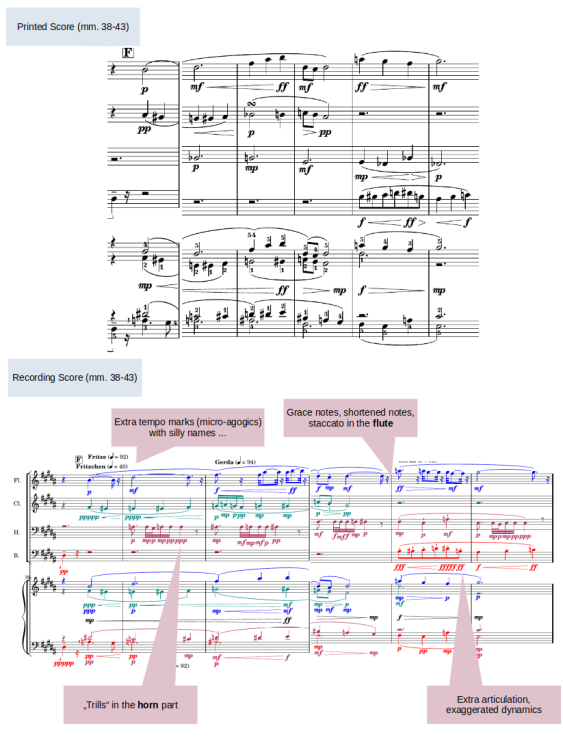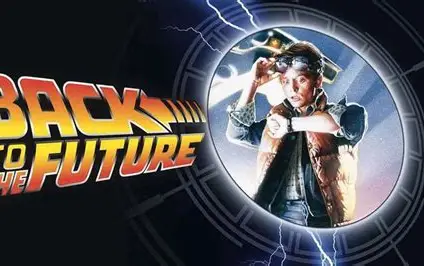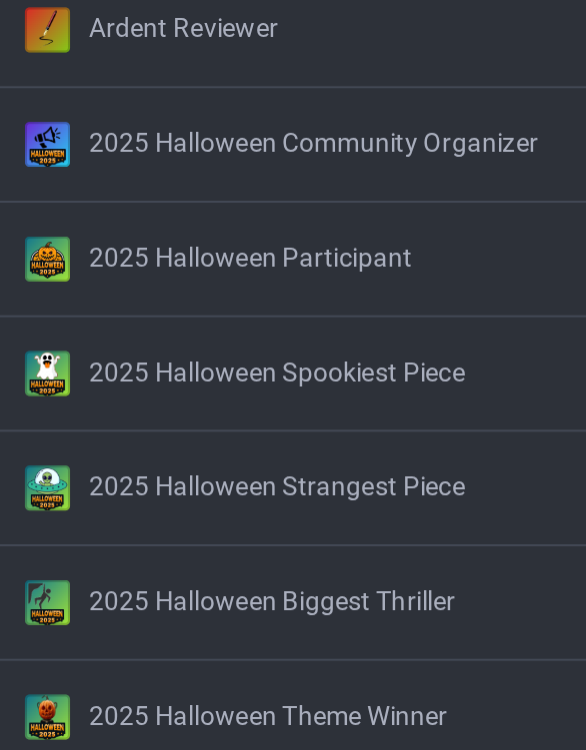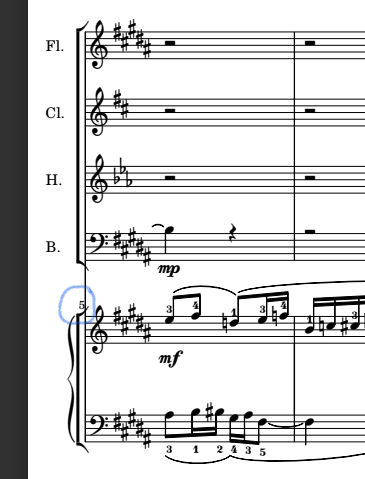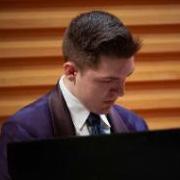Leaderboard
Popular Content
Showing content with the highest reputation on 11/03/2025 in all areas
-
I've encountered a very interesting (and very long) article about "aphantasia" or the inability to see mental images in the New Yorker: Some people can't see mental images. The consequences are profound. (I had to read the article on my cell phone since if I tried to open it on my computer it would require me to get a subscription to the New Yorker.) Summary of the article: Some people can't visualize mental images. This has been dubbed aphantasia after Aristotle coined the term phantasia as the ability to fantasize. But there is a wide spectrum for this ability from hyper-phantasia or the ability to experience abnormally vivid mental imagery to aphantasia or the inability to do so. And this isn't limited to visual imagery but to all of the senses including hearing music, touch, taste or smell. Supposedly, children are born hyper-phantasic and lose the ability gradually through the pruning of neurons in the brain during normal brain development (although some people claim to have been born with aphantasia). I have very vivid memories of being able to imagine whole new pieces of music as a child, complete with a full complex instrumentation/orchestration. I would do this before falling asleep and it was this memory which I attribute to my finding the passion to learn how to compose music later in life. The article also talked about how children who actively bolster their ability to daydream, fantasize or imagine things can stay hyper-phantasic into adulthood. Perhaps this is how Mozart was able to foster his ability to compose and remember music completely in his head. But the question I want to pose for you is whether this kind of ability is something that it is better or worse to have for a composer. I've heard of many composers who have had the ability to hear a whole piece of music in their head all at once, with full orchestration and they always seemed frustrated because they lacked the ability to capture the music on paper or in their sequencer/DAW or notation software. The music just sprung into existence so spontaneously that it proved difficult to capture. It seems that if you don't also develop a great musical memory then the ability to imagine the whole composition in your head all at once is ultimately futile. I have also been diagnosed with a mental illness and it was around that time that I started losing some of my hyper-phantasia. To me, that explains why I had to switch to writing music on paper as the music was now being composed at basically the same pace as I wrote it, not any faster or slower. It was definitely a qualitative shift in the way I wrote music. Before, the whole piece would be finished in the amount of time it took to imagine it. Now, I was never sure how the piece would turn out until I actually sat down to write it. I think there's definitely advantages to both ways of writing. But for me I found that I couldn't be as easily disappointed by my work when I composed in this way. People think that aphantasia is a disease or a disorder, but there is a wide spectrum and I think everyone's gotta learn to take the best advantage of whatever kind of gifts that they may have. Thanks for reading and I'd love to hear what you think! P.S.: This article was recommended to me by my friend Lisa who has aphantasia and bought me my own Muzoracle set and Chromatic Harmonica. So thanks again Lisa!2 points
-
2 points
-
Melodies Themes Motives Harmony Chords Textures Form Development Structure Time Originality Creativity Score Presentation Instrumentation Orchestration Playability Execution of Given Challenge Taste 10 9 8 9.9999 8 7 9 10 8.87498752 points
-
First the short answer: Thank you for your profound review! I’m impressed how thoroughly you listen to the pieces finding out the least details and accurately identify the weaknesses. Yes, there are some grace notes and other small, detailed differences between the score and the recording. Now the detailed answer: Something about how I work when composing. I use lilypond as the notation software which is quite different than the most other ones. Rather than having a Graphical User Interface the music is typed in in a text file – similarly to writing a computer program. The lilypond software than produces the score and a MIDI file from that input, whereas the MIDI file is afterwards used to produce the recording applying soundfonts for the respective instruments. I do not use any virtual instrument plugins to polish the final recording, clicking on different knobs and controls. Since the recording from the plain MIDI file sounds boring and unrealistic, I started to write different versions (with „ifdefs“) in my lilypond source file, one intended for the printed score and one for the recording, where I for example add fingerings for the printed score and more exact and detailed articulation, dynamics, agogics and arpeggiation for the final music to be hered. For the latter case I slip into the role of the interpreter/performer writing down exactly – note by note – how I would phrase or articulate a distinct passage, how trills, arpeggios or ornamentations would be performed exactly etc. The resulting performance-score is therefore overloaded and nearly unreadable, but it gives a visual feedback with which details a human player would perform the piece. And the most benefit of this approach is, that this final polishing is reproducible whenever I make some corrections/changes in the piece, since both the composition as is and the performing hints reside together in on source file. I think this approach is permissible and reflects the reality. A human performer does literally not play one note as written in the score, but introduces that kind of microdynamic, microagogics or microarticulation deviations which finally produces the intended interpretation. What concerning the actual piece, I made such deviations especially for the flute and the horn. I don’t have experience with woodwind instruments, only that „virtual“ ones coming from listening the output from the MIDI file and the respective soundfonts. I discovered the following effects I wanted to mitigate with my „microarticulation“: The flute has only a small range of dynamics and when playing „medium long notes“ (in this case quarter notes) the sound was sometimes very unrealistic (i.e. MIDI like). So I introduced the grace notes as a kind of interpretation or ornamentation of the flute-player puppet which, in my taste, worked around well. The horn was difficult with long notes, the sound became louder and louder the longer the tone was played, as least with the soundfonts I tried out. I don’t know – and therefore formulated as a question – does the horn behave so in reality? To mitigate that loud blaring, I reduced the dynamics of the long notes drastically and sometimes I introduced a „trill“ to stop that loud blaring sound.2 points
-
2 points
-
entry: Ghost Town Requiem Melodies Themes Motives Harmony Chords Textures Form Development Structure Time Originality Creativity Score Presentation Instrumentation Orchestration Playability Execution of Given Challenge Taste 10 8 10. 10 10 10 10 10 Average Score:9.8 very good Review: Execution: The entry meet the core requirements and established correct mood for the competition. Score: The score was delivered to reviewers in a timely manner. No notation errors and engraving errors to be found. Textures: The piano has faster chordal, homophonic part in the middle of piece where as the winds carry the melody( Reh. c) At the begining it feels like more like conversation between the parts, independent parts. Form: There is a clear sense of form throughout this piece. I have no remarks on the other categories.2 points
-
I LOVE variations. Webern isn't necessarily my favorite composer musically, but philosophically, the ability to say a lot with a little is definitely my style. I think you've done the same thing here. That being said, I'd actually suggest you make the Theme a little longer. Even Paganini's 24th Caprice theme has a clear A and a B section despite being so short and I think it really helps to balance the rest of the piece. Whether or not you incorporate it a lot into the other variations is up to you, obviously, but starting with something a little fuller might be nice. Who knows, you appear to be proficient enough to maybe even try to see if you can notice any commonalities in your variations and derive a B-section theme from that; that would be super cool if you could. Generally speaking, this is super wonderful to listen to, you should be very happy with it! I'm always a sucker for good counterpoint, so I think I like Variation 1 the best, but Variation 2 had so much beautiful stuff (see below). One of the hardest things composers struggle with (myself included!) is balancing moving lines and harmony and you have an excellent command of it! Other stupid taste things that my ears caught when listening: Theme, mm. 5–6: The contrapuntal lines of both V1 and V2 in m. 5 feel like they should convene and the jump in V2 feels a little sudden. A small figure to support that upwards movement could help. Var 1, m. 26: It could just be the soundfont, but is there any way you can throw a G in there? The <F, Bb, C> progression feels oddly quartal amidst the rest of the tonality. Var 1, m. 51: The parallel minor ninths between V2 and Cello that "resolve" to the octave feel a little odd to me, maybe because the supported harmony isn't particularly clear either (not that that's a bad thing). Like, the cello seems to want to support ii˚6, but the upper voices are on v. Var 2, mm. 1–2: In contrast, I love the parallel major sevenths between the cello and viola at the beginning of this variation. Such a strong and confident opening gambit. Var 2, mm. 5, 15: Maybe you're looking for "portamento" in the cello? If I saw glissando, I would think the entire dotted quarter's length would be spent sliding. Var 2, mm. 8–9: Love the little V1 figure! Could be pizz. for a little extra definition? Var 2, mm. 21–end: This is so wonderful. My body got chills and the contrast is so well set-up that the big change felt effortless. Well done! For the cello, if might be worth specifying if you want a rolled pizz. or not, because they'll see that and ask. Var 3: Someone listened to Ravel's quartet, eh? I think, here, the contrast between the tremolo and the rest of it works well, but could be better supported for contrast. The fifth movement of the Ravel, for example, keeps a little tremolo (or basically tremolo) figure throughout to keep that energy up. Even if you don't do that, a line that moves some more would help set the contrast a little better, in my ears—maybe not even the first time, but the second time? Like, the second movement of Symphonie fantastique does that implicitly with a second melody that is inherently faster, with 16th notes.2 points
-
Dear friends, hello! I'm Zhang Wenhao, a singer-songwriter from China. It's been a while! This time, I'd like to share with you a folk song that describes the comfort, ease and relaxation of rural life. It's called "Travel Notes of Mountains and Waters". This song tells the story of traveling and enjoying the mountains and waters. I think many people nowadays are under too much pressure from work and life, and they need an outlet to vent and relax. So I'm presenting this "Travel Notes of Mountains and Waters" to you all. I hope that after hearing it, you can temporarily forget your physical and mental fatigue and find solace. 亲爱的朋友们,你们好,我是来自中国的创作歌手张文灏,好久不见!这次来跟大家分享的是一首描写乡村田园生活的舒适、惬意、放松的民谣作品,名字叫《山水游记》。 这首歌讲的是旅行中游山玩水的故事。我觉得现在很多人的工作、生活压力都太大了,需要一个出口来宣泄、放松,所以把这首《山水游记》送给大家,愿你们听到以后,可以暂时忘记身心的疲惫,得到慰藉。 张文灏-山水游记.mp3 歌词如下/The lyrics are as follows: 《山水游记》/《Landscape Travel Notes》 作曲/Composed by:张文灏 Zhang Wenhao 作词/Lyrics by:张文灏 Zhang Wenhao 山腰上吹拂过一枕清风 听山脚蜿蜒过一泓水流 采茶女背着箩筐桥上走 茶歌悠悠飘到山的那头 硕果香把整座山园甜透 小朋友伸着鼻子贪婪嗅 穿过孩群我们到池塘口 有自在蝌蚪和鱼来回游 这山与水 我梦里来过 水畔有个你 山上有个我 你在山水中 笑着对我说 钟爱这秀美 如画的景色 这山与水 我梦里来过 水畔有个你 山上有个我 你在山水中 笑着对我说 钟爱这高雅 如诗的生活 怡人的稻花香随风飞舞 抚摸着脸颊像柔和丝绸 石径旁清泉自顾自清澈 像这处世外桃源的清幽 日头下落世界披上霞红 不远处袅袅炊烟升得稠 回到村庄我们举酒欢歌 饮尽山的包容水的温柔 这山与水 我梦里来过 水畔有个你 山上有个我 你在山水中 笑着对我说 钟爱这秀美 如画的景色 这山与水 我梦里来过 水畔有个你 山上有个我 你在山水中 笑着对我说 钟爱这高雅 如诗的生活1 point
-
1 point
-
Vote for your favorites in this years Halloween Competition! Those who review everyone's entries will receive the "Ardent Reviewer" badge and everyone who participated by submitting music will receive the "2025 Halloween Participant" badge. Besides that, there will also be four winners: "2025 Halloween Spookiest Piece", "2025 Halloween Strangest Piece", "2025 Halloween Biggest Thriller" and "2025 Halloween Theme Winner". So vote for your favorites! The poll is multiple choice so you can vote for multiple pieces for each category. If there is a tie we will simply award the badge to two (or more) people! And don't forget to have fun! (And you're also allowed to vote for yourself, but everyone will know you did so since the voter names are public! LoL) The poll closes on Monday, November 3rd at 11:59 pm PST so cast your votes before then! (And preferably have all your reviews also done before then so we can award the Ardent Reviewer badges to those who have painstakingly and meticulously reviewed all the entries!) The poll is now closed and the results are in! Go to the results and winners page here: To listen to all the entries go to the Submissions Thread:1 point
-
This piece is my first attempt to convert my MIDI sketches into notation. I am still pretty amateur at both composition and notation, so constructive feedback would be greatly appreciated. This was written for a medium sized orchestra, with particular emphasis on strings, a female soloist, and mallet percussion (glockenspiel, etc). I've been composing as a hobby for a while but this is one of my first attempts at really trying to improve the fine details of a piece and make it playable for real. So what I mainly want to know is how this midi-composed piece does in notation form and what could be made better. I'm especially looking for feedback on the following: Orchestration & Clarity: Are the parts written idiomatically for the players? Is the notation understandable? Balance: How is the balance between the main melodies and the background textures? Overall Sound: How is it overall? Is it effective, how does it sound, what could be improved? I have attached a pdf of the score, an mp3 of the original midi file, and a link to a video of the score plus the Musescore audio. Thank you! Score + Audio1 point
-
Sorry, Ignore the previous post. It is too messy. Hi There! Welcome to YC! Anyways, I can clearly hear from the start of what tone you want it to be like. I favor that part from measures 49-76. It generally gives a Coda feeling. You might be wondering: @TristanTheTristan, why didn't you just write from bars 49-the end? That is because, you had outlying part at the end for piano solo, which doesn't feel like it was needed. I will be analysing most bars by themselves here. Interesting, slightly prokofiev-like ideas. Is intended to sound very slightly off-beat by the end? The following is quite a smart idea that plays with syncopation. Nice! (Harp) No. Rename it to just 'Piano (Right hand)'. It is not grand at all. It barely plays anything at all. It usually plays a note and then rests. Other times it is just playing eighths. You are not using the bass either, so rename Piano (Right Hand). Also notice that you are using the simplest chords possible at most times. I, IV, V, not even using the relative minor which would be VI. I listened through the full 3 minutes and whatever something seconds and I didn't find a hint of other chords. You should study pieces like Fantasie Impromptu by Frederyk Chopin Op. Posth. 66, by NOT LISTEN TO IT AND ENJOY IT, but instead study the chords he has used. Study Gaspard de Le Nuit's Ondine by Maurice Ravel M.55 in the same way. Apatite is supposed to be glowing-like. This feels too straight-forward. Music isn't like that. In musical composition you use your brain to find ways to describe it. It is just like the technique in lingual-writing: Show don't tell. You are telling. Good composers show. If you tell it, it might be a lie, but if you show it, you couldn't be lying. Listen, you know what, here is something: on discord I am friends with Meliton Soupelin; you probably know about him. At the start of my composition journey, he has given me great advice. Exactly the following: "Also, if you are at the start of your composition journey, I strongly warn against trying to compose large pieces. Start with small pieces and work your way up with progressively larger pieces only when you are satisfied with the results of the smaller compositions.Your quality of work will substantially increase. I used to compose like you when I was younger. I forced myself into studying my favorite pieces and trying to understand each technique the composers used, and apply them myself. I did not merely pay attention to melody and technique, but also harmony and structure. It was a humbling but very reward experience.That is my only advice. Few people have the bravery to take it. They usually get mad and leave in a huff. But the ones who did follow my advice have made significant improvements as composers." -Meliton Soupelin. I took his advice of forcing myself into studing my favourite pieces and composers and their techniques and everything. I studied Polonaise Fantasie for hours. Then, I continued with the next piece, and then the next. As he said, it DOES in fact take much effort, but worth it. I now see, that he was correct all the way, and I am glad I took his advice. Even now I am using this technique, and as a composer I have wrote much better pieces than before. I wish you listen to my advice. Have a nice compositional life. Remember, Every composer goes through different things. You don't have to take my advice if you don't want to. It is your choice whether you want to regret it or not. Bye. -TristanTheTristan 03/11/20251 point
-
1 point
-
sup The notes are readable, but it's like if I told you "baseball me like" instead of "I like baseball". You're using a DAW, so things like string section 1-4, single piano whole notes, 2 voices in the flutes when you probably didn't mean it, are pretty obvious things that jump out that shouldn't be there. I get what you're trying to do, but that midi seems pretty simple; it might be worth it to type in by hand the notes in musescore or something to better practice. This seemed like incidental music, like film music, and I didn't really hear much for melodies except the repeated motif like 2 minutes in. I think as it's written it'd work best to depict a scene rather than a stand alone orchestra piece. Maybe that's what you're going for? Improvements? Thicker textures, your chords are pretty bare. Maybe study up on melody (Mozart and Chopin are some of my favorites for that) to help in that department. Honestly, if you REALLY want to get better, keep writing for piano and small ensembles, the orchestra can wait. Work on simple things, like 2 note counterpoint. You'll learn a lot about harmony, and the more interesting you can make simple music, the better your works of grand scale will be. Also, not sure on that ending. Just seemed out of place. But, great work nonetheless, and thanks for sharing! Some people like to keep updating the same thread as they work on something, but other times we may hear back from you a few months down the line with the final version of this. Either is fine, just keep up the writing 😄1 point
-
Melodies Themes Motives Harmony Chords Textures Form Development Structure Time Originality Creativity Score Presentation Instrumentation Orchestration Playability Execution of Given Challenge Taste 9 8 8 10 7 10 9 9 8.751 point
-
Melodies Themes Motives Harmony Chords Textures Form Development Structure Time Originality Creativity Score Presentation Instrumentation Orchestration Playability Execution of Given Challenge Taste 7 7 7 10 9 9.5 5 6.5 7.6251 point
-
Oh, wait, actually, can you put me after ones' own name, after the sentence please? That is because I have also given feedback to myself... (Just a joke again, but you can take it seriously...)1 point
-
I probably have a bit, but i mostly remember. If i hear a song enough, i can remember most of it.1 point
-
Can you also please put me and Kvothe at the top after @chopin, like the following? "@Omicronrg9, @Wieland Handke, @Henry Ng Tsz Kiu, @chopin, @TristanTheTristan @Kvothe and myself @PeterthePapercomPoser have reviewed all the entries (minus their own) and will receive the "Ardent Reviewer" badge!" Thank you!1 point
-
I am the opposite. I am never able to imagine the whole piece of music in my head at once. I may have some ideas and planning towards my music, but whether it works or not, I will have to try and write them down. Usually when I start writing, the music tells me what and how they want to be expressed-they simply write themselves out, and usually it's much better and bigger than what I thought or planned beforehand. I am just the midwife of my music and never the real creator of it. Maybe it's from heaven or other places, but definitely not from me. I am still in awe with the emotional power the Sextet brings me to, and I still don't really think it's written by me to be honest. Henry1 point
-
Henry, since you are in Hong Kong you forget that you're living in the future! LoL He actually has 30 hours before he has to finish his reviews! haha1 point
-
Hey Peter. Sorry I ended up missing out these last few days of the month. Personal-side issues, on quite a severe level, have had my focus diverted on them rather than here. Since Music is more of a Hobby for me, I'm unable to prioritize it often. I will still go through and provide feedback for the pieces I missed, as time permits, for the sake of integrity and following through with what I helped to plan for the forum with you all. 🙂1 point
-
1 point
-
1 point
-
Entry:Woodwind Quintet No. 1 Melodies Themes Motives Harmony Chords Textures Form Development Structure Time Originality Creativity Score Presentation Instrumentation Orchestration Playability Execution of Given Challenge Taste 6 7 6 10 9.5 8 8 6 Average Score:7.5 Average Harmony, Textures, Chords: This piece explores the boundaries tonality and plays with sense serialism, chromatism, and dissonance. However, it never quite full fills that modern sense of what atonal and serialism should be. The dissonances seem to resolve, which is not common in serialism and atonal music. If the piece push beyond further, it could achieve so much more. Score: The score was laid out in professional manner. It was easy to read. The only thing that noticeable was odd notation with rest between beats. Execution: Meet the core requirements of the challenge. However, the Halloween theme or mood was not meet. Orchestration and playabity: If this given to woodwind musicians, the odd notation could be problematic. They might be not know how to count that. Thematic material: Usually in serialism or atonality, certian methods are used to devopl the core idea. I feel these methods were not used, but could be used. Originality: This is certinally a creative and orginal piece. Taste: the slowiness of piece made harder to listen to. If the piece had achieved serialism and atonality, then that it would be better. Form: It lacked proper strcuture.1 point
-
Melodies Themes Motives Harmony Chords Textures Form Development Structure Time Originality Creativity Score Presentation Instrumentation Orchestration Playability Execution of Given Challenge Taste 7.5 6.5 8 8.5 10 (nice!) 6.5 7 8 Average: 7.75 Average1 point
-
This is just a reminder post for those wishing to receive an "Ardent Reviewer" badge that by Monday 11:59 pm PST you might still need to review some works! @Omicronrg9, @Wieland Handke, @Henry Ng Tsz Kiu, @chopin, and myself @PeterthePapercomPoser have reviewed all the entries (minus their own) and will receive the "Ardent Reviewer" badge! @TristanTheTristan - you still need to review Thatguy's piece and the last five pieces in the list. You will receive the "Ardent Reviewer" badge! @HoYin Cheung - you've only reviewed two pieces. Do you still intend to review the rest? @UncleRed99 - you still need to review Omicronrg9's piece and the last six pieces in the list. @Kvothe - you still need to review Maxthemusicenthusiast's piece and UncleRed99's piece. You will receive the "Ardent Reviewer" badge! @MK_Piano - you still need to review sebastian Pafundo's, Maxthemusicenthusiast's, Kvothe's, Thatguy v2.0's, and the last five pieces. @Thatguy v2.0 - you still need to review Micah's and Dima's pieces. @therealAJGS - you still need to review Maxthemusicenthusiast's, TristanTheTristan's, and the last two pieces. You will receive the "Ardent Reviewer" badge! @Cosmia - you've only reviewed three pieces. Do you still intend to review the rest? Of course, we're all grateful for your time and your willingness to review however much you want to! Thank you for making this competition fun and instructional for everyone!1 point
-
Yeah, I've settled on making it readable for me, and it could always be spelled differently for certain instruments and spots if the need ever arose. The diminshed scale stuff was fun though, I have decent experience with the whole-half dim. scale but not so much with the half-whole. Very different colors harmonically 🙂 Nice, I'll check it out! I don't remember, it's been so long since I've seen those movies haha. I only remember Marty playing guitar 😄 Thanks Peter! Some of the technique stuff I wanted to do my samples wouldn't allow, but I liked the way the glissandos turned out. This piece made me realize I need to keep practicing string writing, I was afraid of double stops and playability at such a fast tempo. With more time and study, I would have been more fearless with it, but I still like the way it turned out. I'm glad it evoked such scary imagery for you!1 point
-
I know your pain, I think it's rained for a week straight. But Halloween is tonight for me, maybe the dreary cloudy vibe will help the snobbery of my vampire persona Thanks for commenting, glad you liked it! TFW you hear a Henryism for the first time 😄 Hahahahaha! Glad I can keep you on your toes. Thanks for the kind words Mike! Hey thanks for commenting, I'm glad you liked it! Regarding the ledger lines, I agree. How should it be written? I know string players don't always mind ledger lines because of hand positions, but I'm not sure.1 point
-
Hey there Wieland Cool music, it definitely fits the theme of the competition! You're a very solid composer, as your music seems deeply rooted in a heavy contrapuntal style. That style usually isn't for me personally, but I had no problem staying engaged throughout your whole piece. I'm not offering too much in terms of critique for these halloween pieces, moreso just admiration and appreciation. Thanks for sharing this, and I hope it was fun and worthwhile learning how to orchestrate one of your own works. 🙂 Cast your votes in the polls too!1 point
-
1 point
-
Melodies Themes Motives Harmony Chords Textures Form Development Structure Time Originality Creativity Score Presentation Instrumentation Orchestration Playability Execution of Given Challenge Taste 6 9 8 10 10 8 5.5 8 This is a rather technical, and complex piece. After listening to this a few times, the motifs, structure and flow made a lot of sense. It's interesting, because each time I gave this a listen, the music became less dissonant to my ears! Melody: While you do have a clear motive, due to how short it is, I would have liked to hear possibly another theme. But you do vary the motive quite often, so you are able to keep things interesting that way! Harmony: Definitely more on the complex side. Complex in that you wrote a dissonant fugue. But the harmonies mesh well together, especially after listening to this multiple times. Form and creativity: Clear form, and highly original work. Score presentation: Beautiful score, clear notation layout. Playability: This probably would be quite technical to perform, but seems quite playable to me. Execution of challenge and taste: I realize this is highly subjective, but this piece just doesn't remind me of Halloween, despite the dissonance. But I still enjoyed the piece very much, especially since I am a big fan of fugues.1 point
-
Hi Wieland. Nice video to begin with. The sounds are also very nice. Now, the score itself has even smaller margins than my own, so I'd be careful depending on the format whenever it comes to printing. You also suffer from classic overlaps caused by the notation software default configs such as: That aside, some pianists would argue that they prefer their own fingerings so they may ask you an un-fingered part. Some other will be grateful though 😀. Now, regarding the piece itself, while I do catch some G# minor sections, I would argue that most of it seems detached from that key. I noticed lots of G naturals but few F double sharps, and I would say I heard more E minor and B-flat minor passages than G# minor throughout the piece. Maybe I’m mistaken, but as Henry said, this isn’t really a problem. I can also see how the piece weaves together fragments introduced mostly at the beginning, and in theory it does what you describe in your technical explanation. However, while I appreciate their inherent potential to create a structure, I don’t really think they fully succeed in building one. After a couple of listens, I still don’t perceive it as something “complete” or well-structured, despite the explanation you provided and the fact that the elements you mention are indeed present. To my ear, it feels like patches of cement and bricks placed in the middle of an amalgam of sometimes more, sometimes less convincing waves of music... The motives are definitely there, but I don’t find them more prominent than other material happening simultaneously—such as, for example, in the recapitulation, but imo it happens on the piece overall and if you didn't point them out some of them as different, I think I would have had a harder time distinguishing one another when intertwined with other material. In my opinion, there’s a lack of prioritization among the fragments, and that combined with how dissonant they are on their own creates an “uncanny” atmosphere that permeates large portions of the piece restlessly. While that can be effective, it becomes tiring to me, and I don’t feel this is resolved towards the end. Thus, the final passage is a no-no for me. After a piece plagued with dissonances & chromatisms clashing and not letting you breathe much, a final G#m conclusion comes all in a sudden despite the morendo. Don't get me wrong— It's not a very bad final passage, not at all, but I don't see it, once again, well connected with the piece overall. On the other hand, I would say this piece feels more Halloween-like than others I’ve listened to recently, which also make use of dissonances not only on the melodic plane, but also on the rhythmic and textural planes. All in all, a piece I honestly did not enjoy but that I did not dislike either. Many thanks for submitting your piece to this competition and good luck! Kind regards, Daniel–Ø.1 point
-
Hello all! I am classical pianist based in the United States and have been composing in my spare time since 2023, mainly hand writing and using MuseScore as my notation engine of choice. This post marks my first ever post and submission here on the Young Composer's Forum. If you would like to know more about me, both my website and short biography can be found on my profile! __________ YCF HALLOWEEN SUBMISSION: For this year's halloween competition, I created a ~5-minute long work for a Piano Quartet (Violin, Viola, Cello and Piano). This was my chamber of choice as currently, I am learning, and will be performing, Beethoven's Opus 11 Piano Trio in Bb with two other peers, and felt inspired to write something more traditional. Composed in C-minor, this work is set into Ternary Form (A-B-A') and aims to cast music for the time of Halloween. If you would like to know more about the piece, you can find more information on Page 3 in the "About" section. Thank you for taking the time to view my score and consider this work for this event! __________ (DISCLAIMER: The Midi playback from Musescore Studio sounds a little skewed in the solo violin part, however, this setback does not object to the playability of the part.)1 point
-
Thanks for the feedback! As a little lore to this, I originally wanted to write for Piano Quartet using the woodwind families. I started music on the Bb-Clarinet, and in college, became the Principal bassoonist for our symphonic band for two semesters. When beginning to write, I was really inspired by the Nightmare Before Christmas and Danny Elfman as a whole. However, I just never found any concrete ideas with this instrumentation. It all felt too stereotypical. Thus, I went even more traditional and back to the orchestral setting for this work. I never thought about another name. One user suggested increasing the tempo slightly, and there more I listen back, there more I am beginning to agree with it. I don't have any new ideas for a name, but after this contest concludes, I may revisit it, add those changes, and change the name. Maybe, while I am at it, add another movement or installation and make it a chamber set. Thanks again!1 point
-
The instrumentation choice is perfect! I like the bassoon and the base clarinet introducing their own dark personalities. In contrast to so many other atonal submissions, this piece has clear melodies and harmonies and the Halloweenish timbre is almost accomplished entirely through the expressiveness of the bass instruments, without overstressing dissonances. The dance starting in section C (especially with the triplets from bar 36 on) introduces a feeling of awkwardness, raising the image of mysterious creatures wiggling around. All in all a piece I liked very much, but I must admit that it in the sense of the contest and in the context of the other submissions, it is – for my taste – a little too well-behaved and the blending of all instruments together seems too „perfect“, in order to get the award of the „most scary and spooky“ one. By the way, the title „Ghost Town Requiem“ is – in my opinion – a bit too bold, but what matters. Melodies Themes Motives Harmony Chords Textures Form Development Structure Time Originality Creativity Score Presentation Instrumentation Orchestration Playability Execution of Given Challenge Taste 9 8.5 7 9 9 9 6 7.5 Average Score: 8.1251 point
-
Very beautiful, dreamy music. I love the tension between the clean and consonant passages and the dissonant ones, whereas those dissonances are never scary or threatening, they only darken the calm and peaceful character a little. However, since being a beautiful piece of music, it reminds me more of a starry summer night with gold dust falling from the sky and elves playing around than on a misty, windy October evening with sinister creatures. Will say, therefore it does not so perfectly match the objective of the contest to find the "Spookiest/Scariest piece". Nevertheless, the instrumentation with the pizzicato and pearl-like thirds runs on the piano as well as with the pedalling and the reverb perfectly produce the desired mood. One of my absolute favorites! Melodies Themes Motives Harmony Chords Textures Form Development Structure Time Originality Creativity Score Presentation Instrumentation Orchestration Playability Execution of Given Challenge Taste 9 9 9 9 9 9 6 8 Average Score: 8.51 point
-
Entry: Piano Quintet in G sharp minor - 2025 Halloween Competition Submission by @Wieland Handke Melodies Themes Motives Harmony Chords Textures Form Development Structure Time Originality Creativity Score Presentation Instrumentation Orchestration Playability Execution of Given Challenge Taste 9 8.5 10 9 10 9 9 9 Average Score: 9.19 Review: It’s a clever idea to use themes from your pre-existing series of preludes and fugues! It makes your piece that much richer. I like how you give a programmatic context also, for why the piece is for this particular instrumentation (and why you’re using a honky-tonk piano patch! LoL) The piece is certainly creepy and fits the Halloween theme quite well. It’s easy for me to follow the various different recurring themes despite the complex harmonic language that you use. And in the end I guess you included the sound of someone stepping through the leaves? Besides that the ending did kind of sound like the music just stopped. It seems like the piece could have ended at any of the short pauses/cadences that you have throughout the piece and it would have had the same effect. But I guess it’s hard to make a piece sound truly conclusive in this kind of style. Also, I noticed in the recording that there’s some grace notes present that I can’t see in the score - what did you intend there? Thanks for your participation and good luck in the public voting polls!1 point
-
Entry: Bagatelle No.6 | Om. 101 by @Omicronrg9 Melodies Themes Motives Harmony Chords Textures Form Development Structure Time Originality Creativity Score Presentation Instrumentation Orchestration Playability Execution of Given Challenge Taste 10 10 10 10 10 10 10 10 Average Score: 10.00 Review: This piece is more contemplative, perhaps a bit reminding me of Erik Satie. The overall major tonality is encroached upon by out-of-key notes that give the piece a happy-go-lucky but creepy quality much like the way clowns are happy but creepy to many people. It’s very atmospheric and free until the main theme comes in in bar 32 which is unsettling in its lack of clear melodic direction and resolution. But this lack of direction and resolution is intentional and definitely achieves a certain deliberate effect. When listening to the main theme of this piece I imagine a creepy clown dancing and bobbing his head left and right LoL. The piece ends like an unfinished puzzle better left that way or maybe like a question better left unanswered. I could also imagine this being played in a movie such as “The Talented Mr. Ripley”. The rendition also uses crystal clear piano and flute which are a big advantage to this listeners impression of the piece. This piece also borders on being both atmospheric and a storytelling piece. It has both melodic development and cinematic repetition of its themes. Very excited to see how people will vote in this competition. Thanks for your participation and good luck to you!1 point
-
Entry: YCF Composition Competition - Halloween 2025 (Submission) by @UncleRed99 Melodies Themes Motives Harmony Chords Textures Form Development Structure Time Originality Creativity Score Presentation Instrumentation Orchestration Playability Execution of Given Challenge Taste 4 7 7 7 9 9 10 7.5 Average Score: 7.56 Review: You’ve set a very atmospheric mood that would be very appropriate as background for perhaps a Ghost Town hidden object game or a short film or documentary about a Ghost Town! As a concert piece however it falls short of the melodic and harmonic development prescriptive norms of classical music. The most salient features of your piece that leave a lasting impression after the piece has concluded are the moods created by your chord progressions and oom-pah accompaniment figures which give a certain impression of a grotesque dance perhaps akin to @MK_Piano’s submission DANCE FROM THE SKELETON BALL submission. I can’t hum, whistle or sing any of the melodies that you present in this piece after the piece has concluded. I mention this because I think you probably do consider that this piece has melodies, but to me it doesn’t. The melodies are too complex and not self-similar enough to stay in this listener's musical memory and create a lucid listening experience. I know this isn’t the first time you’ve heard me say this, so let me just try to elaborate on the point in a way I haven’t before. The reason why Beethoven’s 5th Symphony 1st movement is so popular and such a lucid listening experience is because he managed to generate all the melodic material and unify it through a single motif, sometimes using it as just a rhythmic motif, sometimes as both rhythm and pitch, and other times as just pitch. There is great economy in the melody. There isn’t a single note that is missing nor superfluous. I am not saying that you should aim for perfection in your music, I’m just trying to point out how Beethoven used the motif as a dynamo to generate and develop all the rest of his melodic material and create a lucid listening experience. Many composers have done this and you don’t have to be a genius to use the idea to your advantage. I hope that makes clear what I mean when I keep talking about these things. But you did create a piece which as I said, is very appropriate for the Halloween theme. Another advantage is the crystal clear rendition of your music - the piano sounds like glistening ice in its high register. Another way I’d describe the melody in Polish is “tuzinkowe” which translates to “random” or “ordinary” (a term I learned after my grandma used it to describe some of my music LoL). There is a certain grotesquery to the melody too, because it's dark and it has a sort of march-like character. But, those are my thoughts. Thanks for your participation!1 point
-
@UncleRed99 Taste: what I like about this is: Tranposing is great way to learn how transform themes and ideas. I think more should try it out. Both pieces executed that well! 10 Thematic and harmonic textures: (I am combing harmony and melodic categories into one) The foreground, which is double in the woods, is nice. The background elements provide a solid harmonic support. It is homophonic in nature. Still, having solid back bone is important. The main vocals cant sing with back vocal, yes? You were certiantly creative in this idea. 🙂 I can not score in the execution of the competion for this was not for competition... The form is rather simple but yet well done. Great job overall1 point
-
Melodies Themes Motives Harmony Chords Textures Form Development Structure Time Originality Creativity Score Presentation Instrumentation Orchestration Playability Execution of Given Challenge Taste 8.5 9 8 8 9 10 8 9.5 This gives me a spooky romantic vibe. Perhaps lost souls on Halloween trying to find love or meaning to existence. It's very enjoyable to listen to not only because of how emotional this is, but because this type of harmony resonates well with me. Furthermore, I find this piece to be well structured, and easy to follow. I love how you break up the momentum at around 1:20. As a YouTuber, I learned that this is incredibly important to do on longer videos. Especially with the the shorter attention spans these days. Melody and Motive + Harmony: I just find these to be very clear throughout your piece, with logical breaks and great emotional supporting harmony. Form and Creativity: Highly structured, easy to follow. Score presentation + Playability: Beautiful score and this seems very playable. Execution and Taste: This is a highly romantic piece that does give off Halloween vibes, and I resonate well with this style.1 point
-
Hi @Wieland Handke! I love the pointillistic touch of the whole piece, kind of like Klangfarbenmelodie. The piece doesn't sound tonal for me until the end when it ends in the G sharp minor, but it enhances the unsettling mood for it. Your use of motive is very tight and organized. I subjectively feel like the music somewhat lack drama for climax and passages less excited, and I feel like you can sometimes just reduce one or two instruments in certain passages for creating climax when all the instruments appear. The other thing is the horn, because in real performance the horn may easily overpower the other instruments especially in its forte/fortissimo passages so the balance need to be careful. The high register of flute and clarinet can also be established more frequently for the Halloween vibe! Thx for joining the competition and sharing! Henry1 point
-
Review: I like the melodies and the unsettling feel of them The chords feel very off, but that's probably just me being used to certain ones; but the texture is really good. The structures pretty good, but the time does feel a little bit off... this piece is pretty original but does use share some similarities with the other submissions. the score is presented like any other so I'd say its pretty good. seems very much like it could be played with some practice. you executed it well with an introduction, a video, a MP3 and a score. it does give halloweenish vibes and reminds me of background music for one of those old black and white cartoons where the characters don't talk, but a halloween special. Melodies Themes Motives 8 Harmony Chords Textures 8 Form Development Structure Time 7 Originality Creativity 7 Score Presentation 7 Instrumentation Orchestration Playability 8 Execution of Given Challenge 8 Taste 7 overall, 7.51 point
-
Wow! I haven't logged in for a long time. I didn't expect that my work received such good reviews. Thank you so much for liking my work so much!1 point
-
You can still do it, there are 6 hours left to finish them and earn the "Ardent Reviewer" badge!! Of course you can do it later, but you will lose the badge!! 😘0 points

.thumb.png.1e2763f479362bbb522da50d31ef2e50.png)
.thumb.png.8b5b433a341551e913a34392660bc95b.png)


